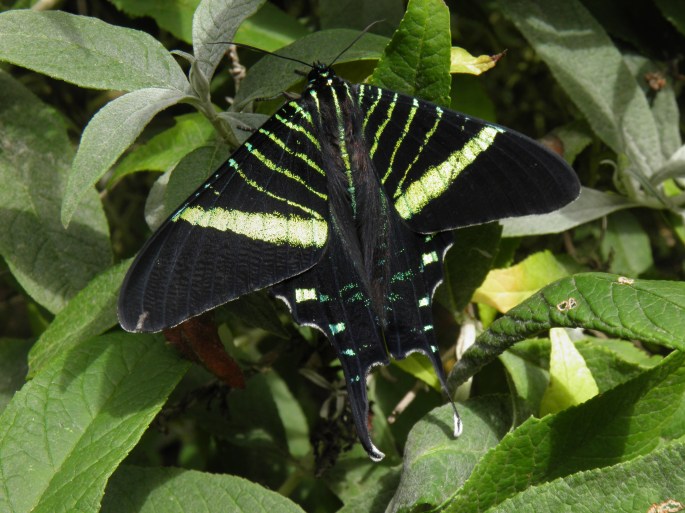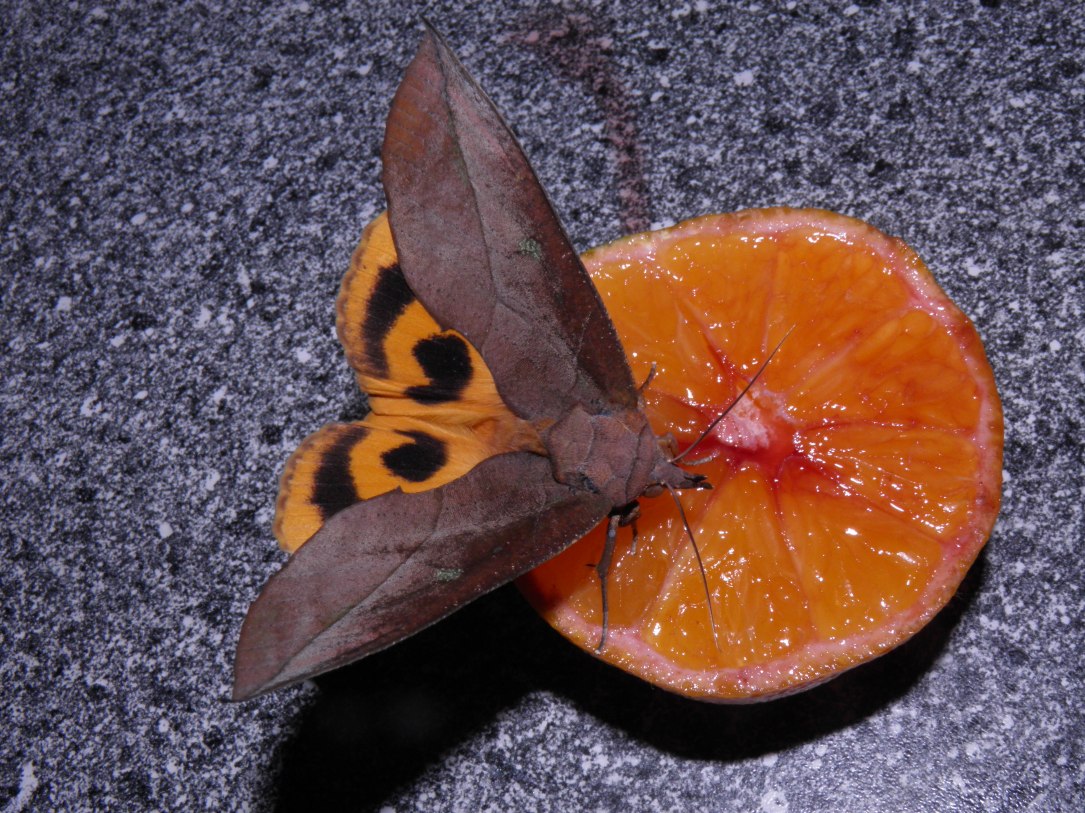Welcome to the hall of rarities and weirdos!
While the biggest weirdo here may be me, the guy that obsessively has to play with insects, once in a while I come across species or specimens that HAVE to be documented, because they are just that different, awesome, rare or weird!
On my website, I also aim to fully record the full life cycle of the species I write caresheets about; that includes pictures of larvae and adults. Obviously this does not always work, as some species fail to pair, don’t make it to adulthood, or I just didn’t intend to breed them. This results in a lack of information that makes them unsuitable for my website, since my website is about breeding. However, because some pictures are just to awesome not to share on my website, I decided to make a “hall of fame”. Enjoy! This list will increase with time.
1. The white monarch
 The stunning beauty of the white monarch
The stunning beauty of the white monarch
This is a true rarity among raries. The monarch butterfly (Danaus plexippus) is a pretty ubiquitous butterfly with a very large range from Central America up to Canada, migrating even to other parts of the world such as Australia and the Canary Islands. However, it seems that these butterflies can carry a very rare recessive trait that codes for a lack of orange. When expressed, the butterfly shows a stunning lack of orange!
I have been one of the few lucky people to have seen this happen in captivity. The specimen hatched behind the scenes in the tropical butterfy greenhouse, Amazonica, of Rotterdam Zoo in the Netherlands.
Even more interesting is that the recessive trait is in fact heritable, making it possible to selectively breed these rare white monarchs; I know of atleast a few lucky breeders that went as far as to breed a strain of white monarchs. Another interesting fact is that there has been a small timeframe in which these white monarchs have been unusually more frequent in Hawaii; it seems that in the more isolation population of butterflies on Hawaii, this trait was established more widely, resulting in a surge of white monarchs. For this reason, many people still refer to white monarchs as “Hawaiian” monarchs.
While it is true that the trait has been more common than it is in other parts of the world in Hawaii, this seems to have been a temporary event, and observations suggest the frequency of this phenotype is decreasing in Hawaii. The white monarch is a true rarity anywhere in the world – even in Hawaii – and may occur anywhere, due to a mutation or recessive gene.
2. Golden Automeris io female
Automeris io is one of the more common Saturniidae species of North America and one that I have bred many times. While there are a few known subspecies with different colours, there is otherwise not much variation in these moths. The males are smaller and yellow, while the females are bigger and have brown forewings instead of yellow.
 Automeris io; normal male and female
Automeris io; normal male and female
Imagine my suprise when a female hatched, that had a lot of yellow hairs on her body! I checked her for signs of gynandromorphism, but it seems she was just a regular female, except that her genes seemed to expres the trait of yellow hair, a trait that is usually male in Automeris io. These natural curiosities happen in captivity once in a blue moon.
 Automeris io female, I have dubbed her the “golden female”
Automeris io female, I have dubbed her the “golden female”
Also interesting is the fact that she seemed much hairier than the “regular” females, I theorise this is because her yellow hairs seemed to be additional hairs that were added to her already brown coat, giving her a “golden” look and making her extra hairy. In the image you can see her legs are also abnormally hairy.
3. Uraniinae (Uraniidae) moths
Considered to be the most beautiful moths in the world, some of the iridescent day flying Uraniidae are very impressive to observe in captivity. However, breeding them is very challenging outside of their native habitat, for they require large amounts of Omphalea vines (their natural host plants). Not only is Omphalea extremely hard to grow; it grows extremely slow, and it will take years upon years of preparing host plants before one can succesfully breed these moths in captivity. The larvae are very destructive and after raising one generation you will probably be out of host plant; while the slow growing plants will hardly recover from the feeding damage. IF you manage to grow them at all, it is very difficult to grow healthy, large batches of Omphalea. Genera such as Urania and Chrysiridia however, are extremely impressive to see in captivity if obtained, even if nearly impossible to breed. Due to my extensive contacts all over the world however, I am still able to import cocoons from them, and observe the adults for my enjoyment – even if breeding is not on the table.
4. Eudocima tyrannus – fruit piercing moths
I did my best to breed Eudocima tyrannus, I truly have. But in the end, mine failed to pair and lay eggs. Why? Perhaps because the only three individuals I had were males. I haven’t checked however. Maybe I did something wrong. I expected to recieve much more pupae, but unfortunately the majority of them hatched in the mail, crippling them in the process, giving only three healthy adults.
I was still extremely thankful to see them in captivity however, the adults are brilliant. These fruit piercing moths have a very sharp proboscis, one that can pierce through the skin of several kinds of fruits! This is exactly what the adults feed on in the wild, hence then name “fruit piercing moth”.
 Eudocima tyrannus piercing fruits
Eudocima tyrannus piercing fruits
The moths are very self sufficient in captivity and will seek out fruit on their own and feed on it, as long as it is provided. They are among the longest living moths I have owned, living up to 3 months if well cared for.
5. Many beautiful Sphingidae
To me, atleast, it seems that many if not all of the tropical Sphingidae are very hard or impossible to breed. Because of this it has sadly happened multiple times that I have recieved eggs or pupae of Sphingidae of beautiful species that failed to pair and produce another generation in captivity. Why tropical Sphingidae are so hard, or impossible to breed while Palearctic species can be very easy to breed remains a mystery. Here are some images of them.
 Pergesa acteus is a beautiful bright green hawkmoth from the tropics. I had many pupae of them too; but many emerged crippled or had a very short lifespan. Sad! However, atleast I still got to see them in their green glory.
Pergesa acteus is a beautiful bright green hawkmoth from the tropics. I had many pupae of them too; but many emerged crippled or had a very short lifespan. Sad! However, atleast I still got to see them in their green glory.
 Eupanacra elegantulus is another spectaculair species of Sphingidae. Did you know their sides have shiny, metallic gold scales? Unfortunately any of these little dragons absolutely refused to pair. Atleast I got to see them.
Eupanacra elegantulus is another spectaculair species of Sphingidae. Did you know their sides have shiny, metallic gold scales? Unfortunately any of these little dragons absolutely refused to pair. Atleast I got to see them.
Dear reader – thank you very much for visiting! Your readership is appreciated. Are you perhaps…..
- Not done browsing yet? Then click here to return to the homepage.
- Looking for a specific species? Then click here to see the full species list.
- Looking for general (breeding)guides and information? Then click here to see the general information.
- Interested in a certain family? Then click here to see all featured Lepidoptera families.
Was this information helpful to you? Then please consider contributing here (click!) to keep this information free and support the future of this website. This website is completely free to use, and crowdfunded. Contributions can be made via paypal, patreon, and several other ways.








